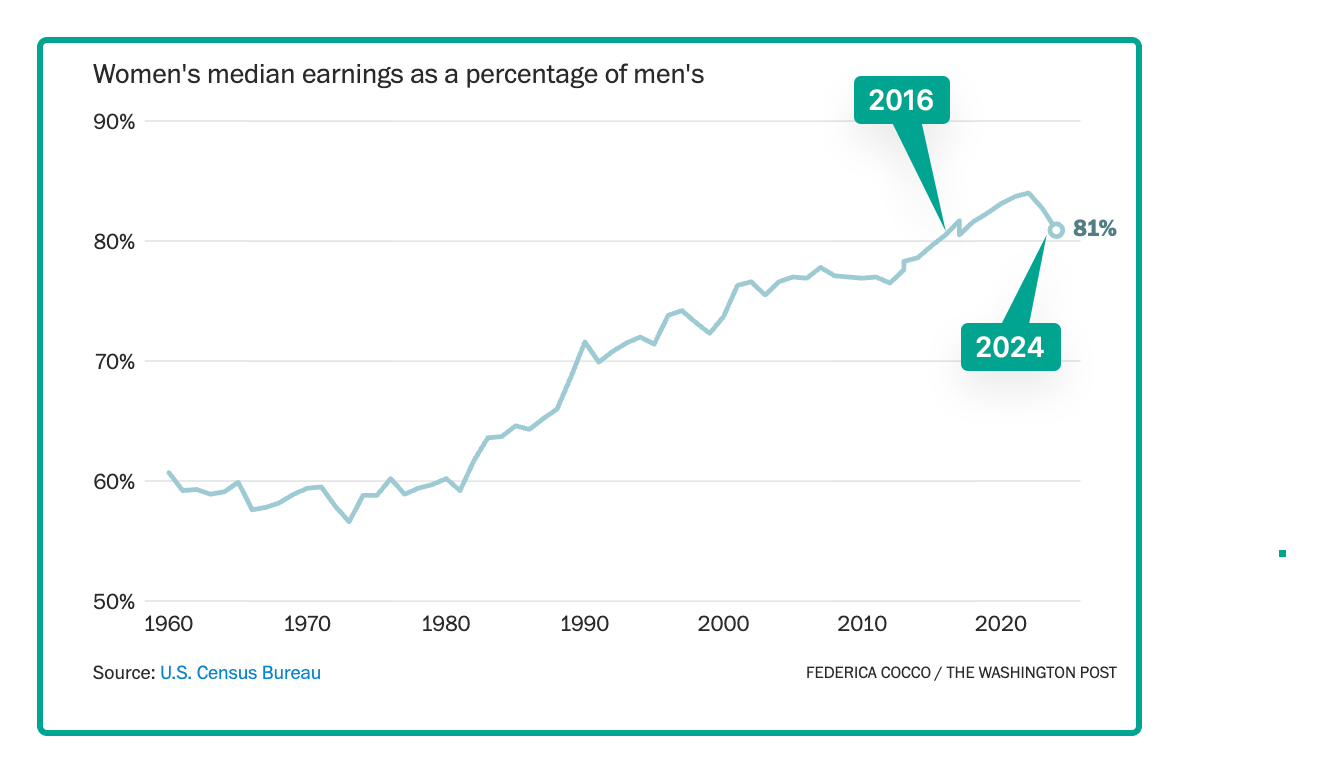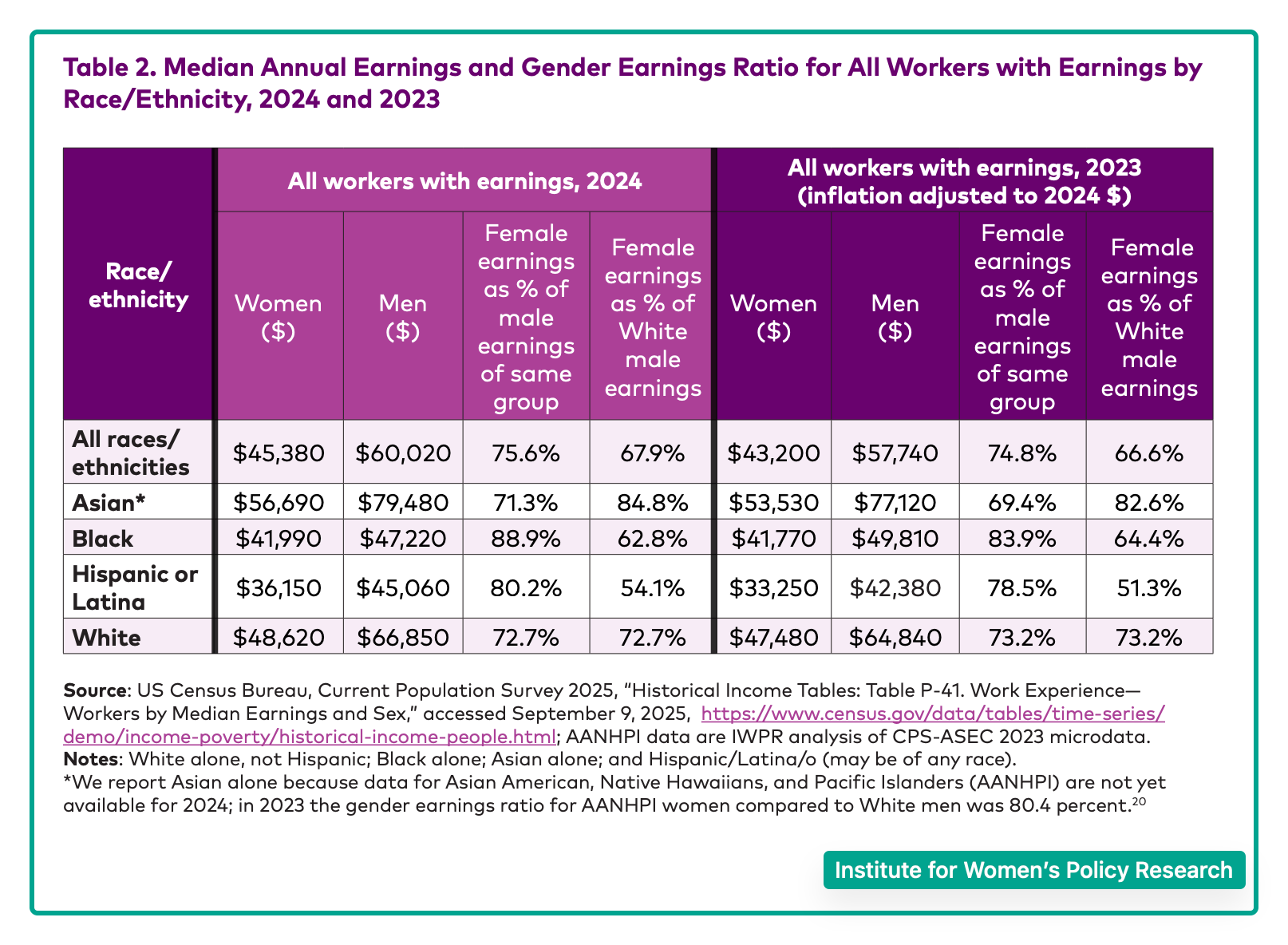
The Impact of a Wine Tariff
October 27, 2025
What the Alphabet Says About the Economy
October 29, 2025Asked about the gender pay gap you could say 81 cents in 2016 and 81 cents in 2024.

But it is more complicated.
The Gender Pay Gap
For decades, the gender pay gap diminished with an 84% peak in 2022 and 2023. Then though, the slide began. Shown by the numbers, and summarized by the IWPR, women experienced the “biggest annual drop in the gender earnings ratio since 1966, and the worst ratio since 2016.” In 2024’s strong economy, men’s wages rose by 3.7% while women’s were statistically flat.
From here, the gap takes to a slew of different paths.
As women age, the pay gap widens. And it gets even more complex when we look at different occupations. Jobs with long, inconsistent hours and unpredictable client and co-worker contact have the bigger gap. Add to that specific projects and strict deadlines and you get higher paying jobs to which men gravitate and women avoid. Others (like pharmacists) that have more flexibility tend to have less of a pay gap.
No matter what the job though, there is one common denominator. Marriage. Even when they do not have children, married women tend to have more responsibilities at home. Because of those obligations, women work fewer hours, take more time off, and need jobs with flexibility.
Below, you can begin to see how different groups’ numbers vary:

And that takes us to the reason for the widening pay gap. The post Covid back-to-the-office tilt at multiple workplaces hit women the hardest. Whereas they could juggle the kids and the job at home, increasingly expensive childcare made it more difficult to return. And, as we all know, women bear the childcare burden more than men.
Our Bottom Line: The Khasi
Looking at the Khasi, we can see the cultural roots of attitudes about women. We don’t have to behave this way.
Located in Northeast India, the Khasi is a matrilineal society numbering close to 1 million (2011). From birth, women experience a female world. Their households are led by females, businesses are run by women, property can be inherited only by women. When University of Chicago researchers quantified male and female tendencies to compete, the Khasi women got the top grades.
In a Khasi maternity ward, you might hear cheering when a girl is born and, “‘oh okay, he’ll do” for a boy.
Or, if you visit a Khasi home…
“When we visited the Khasi household of a youngest daughter, if a man (obviously the husband) came first to greet us, he always said ‘please wait, my wife (or mother-in-law) is coming.’ And it was the wife who entertained us…while her husband remained in the corner of the room, or in the next room.”
Do take a look to see the Khasi:
https://www.youtube.com/watch?v=m4xCszNohfE
Returning to the U.S., yes, we have a pay gap. However, it can shrink. The solution? As economist Claudia Goldin recently said, “Equality…requires a level playing field at home and in the market.”
My sources and more: Thanks to Bloomberg radio for alerting me to the increase in the gap. From there, Pew had an overview and NPR and The Washington Post, the update. However, as always, the Institute for Women’s Policy Research is our best destination.
Please note that several of today’s sentences were in a past econlife post.
![econlifelogotrademarkedwebsitelogo[1]](/wp-content/uploads/2024/05/econlifelogotrademarkedwebsitelogo1.png#100878)



